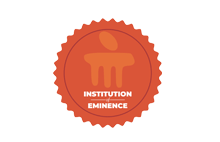Development and evaluation of antimicrobial PVC-grafted polymer for enhanced paint applications
Document Type
Article
Publication Title
RSC Advances
Abstract
Demand for antimicrobial paints is increasing globally due to the rising need to control microbial growth and reduce infection risks in various environments. This increased demand underscores the crucial role of advanced antimicrobial coatings in promoting health and safety. In this context, an innovative poly(vinyl chloride) (PVC) grafted polymer with 1-(2-aminoethyl piperazine) (AEP) was prepared and studied in detail. In this study, the prepared polymer was characterized using FTIR and NMR spectroscopy to examine the polymer's chemical structure and employed TGA and DSC for thermal stability analysis. The antimicrobial activity of the grafted polymer was evaluated through the agar diffusion method and showed a significant inhibition zone of 21.6 mm for S. aureus, 16.3 mm for E. coli, 18.3 mm for M. smegmatis, and 20.3 mm for C. albicans at a lowest concentration of 12.5 μg mL−1. To assess surface characteristics, the PVC-g-AEP polymer was mixed with commercial paint and applied to a glass surface. SEM and AFM analysis showed a 5-times increase in porosity while maintaining visual aesthetics. Additionally, the paint displayed excellent stability against water, retaining around 90% of its antimicrobial activity even after 15 washes. This advanced polymer not only exhibits superior antimicrobial properties but also improves paint durability, setting a new benchmark for high-performance antimicrobial coatings and significantly advancing protective paint technology.
First Page
25669
Last Page
25677
DOI
10.1039/d4ra04173a
Publication Date
8-22-2024
Recommended Citation
Gupta, Sonali; Puttaiahgowda, Yashoda Malgar; and Kulal, Ananda, "Development and evaluation of antimicrobial PVC-grafted polymer for enhanced paint applications" (2024). Open Access archive. 10155.
https://impressions.manipal.edu/open-access-archive/10155


